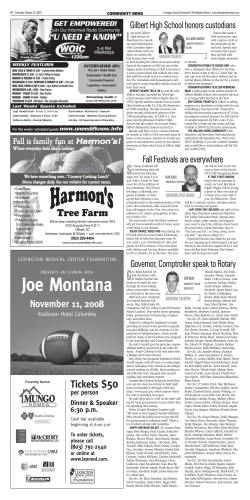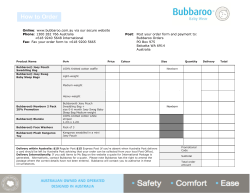
Gilbert`s Potoroo (Potorous gilbertii)
Gilbert’s Potoroo (Potorous gilbertii) Australia’s most endangered mammal Description The Gilbert’s Potoroo is slightly smaller than a rabbit, with a dense coat of soft greybrown fur, slender snout and rounded ears that are almost completely buried in the fur. The tail is lightly furred, and curls up tightly when the animal is at rest. When standing the animal has a hunched appearance. The forefeet have long curved claws, forming strong digging appendages that are also able to handle food items with great dexterity. The hind feet are long like other members of the kangaroo family. Gilbert’s Potoroos place their forefeet on the ground when moving slowly, but hop on their hind feet when moving rapidly. Adult males weigh 1100g and females 900g. Their head and body is 270 mm long and tail a further 210 mm long. Distribution Photo courtesy Dick Walker (Potoroo Action Group) Discovered in 1840 by John Gilbert, a naturalist and collector working near Albany, Western Australia, they were thought to be extinct since the early 1900s. Then in 1994 they were rediscovered at Two Peoples Bay Nature Reserve near Albany. It is unlikely that many more than 30 animals exist in this sole wild population. Habitat Found today in dense long-unburnt shrubland on the flanks of Mount Gardner, Two Peoples Bay Nature Reserve. Preferred habitat is tall shrubland dominated by Melaleuca between 1.5 and 2 metres tall. The potoroos nest during the day and at times during the night in bowl-shaped depressions beneath low bushes, generally well hidden beneath the shrub canopy. Diet The fruiting bodies of underground fungi (sometimes called ‘truffles’) make up over 90% of the diet of Gilbert’s Potoroo, all year round. Other food items such as berries, fleshy seedpods and insects are sometimes eaten but only in small quantities. Life Cycle and Reproduction Female Gilbert’s Potoroos can produce young at any time of the year. Young are born 4-6 weeks after mating and are approximately 1cm long at that stage. They spend three to four months in the pouch before coming out for the first time. Within a week they have permanently left the pouch, although they still suckle from the mother. On the night of permanent pouch exit, the mother will mate again. The young conceived can develop normally or can be kept in a temporarily suspended state of development (embryonic diapause). Threats The species and its habitat are subject to a number of ongoing and potential threats including a wildfire, predation from foxes and feral cats, the impact of the dieback disease caused by the root pathogen Phytophthora cinnamomi on fungi host plants and the clearing of areas of suitable habitat within the species extent of occurrence. Recovery Plan Recovery actions have been undertaken since the species' rediscovery in 1994 with the focus being on increasing numbers of Gilbert’s Potoroo and establishing more populations. Attempts to establish a captive breeding program was unsuccessful due to the low reproductive rates of the captive animals. Efforts to protect the existing wild colony include baiting to control foxes, investigating the impact of cats on Potoroos and hygiene protocols to stop the spread of Phytophthora cinnamomi. A second wild colony has also been established on the feral-free Bald Island. Survey results from 2012 indicate the Bald Island Population is thriving. FAME supported the establishment of a protected breeding area in Waychinicup National Park, 25km east of Albany. Since 2011, small numbers of potoroos have been released into this specially built 308 ha enclosure with the aim of establishing another healthy mainland population. There are now over 20 Potoroos within Waychinicup National Park. References Information courtesy of Dr Tony Friend, Principle Research Scientist, Department of Conservation and Land Management in Western Australia. Courtenay J. & Friend A. 2003. Draft Gilbert's Potoroo Recovery Plan 2003-2008. Wildlife Management Program, Department of Conservation and Land Management. Gilbert’s Potoroo Action Group. www.potoroo.org Sinclair E.A. Darks A. & Wayne A.F. 1996. Rediscovery of Gilbert's potoroo, Potorous tridactylus, in Western Australia. Australian Mammalogy. 19(1), 69-72. Strahan R (Ed) 1995. Mammals of Australia. The Australian Museum Trust. Reed New Holland, Australia. May-15 www.fame.org.au
© Copyright 2025













